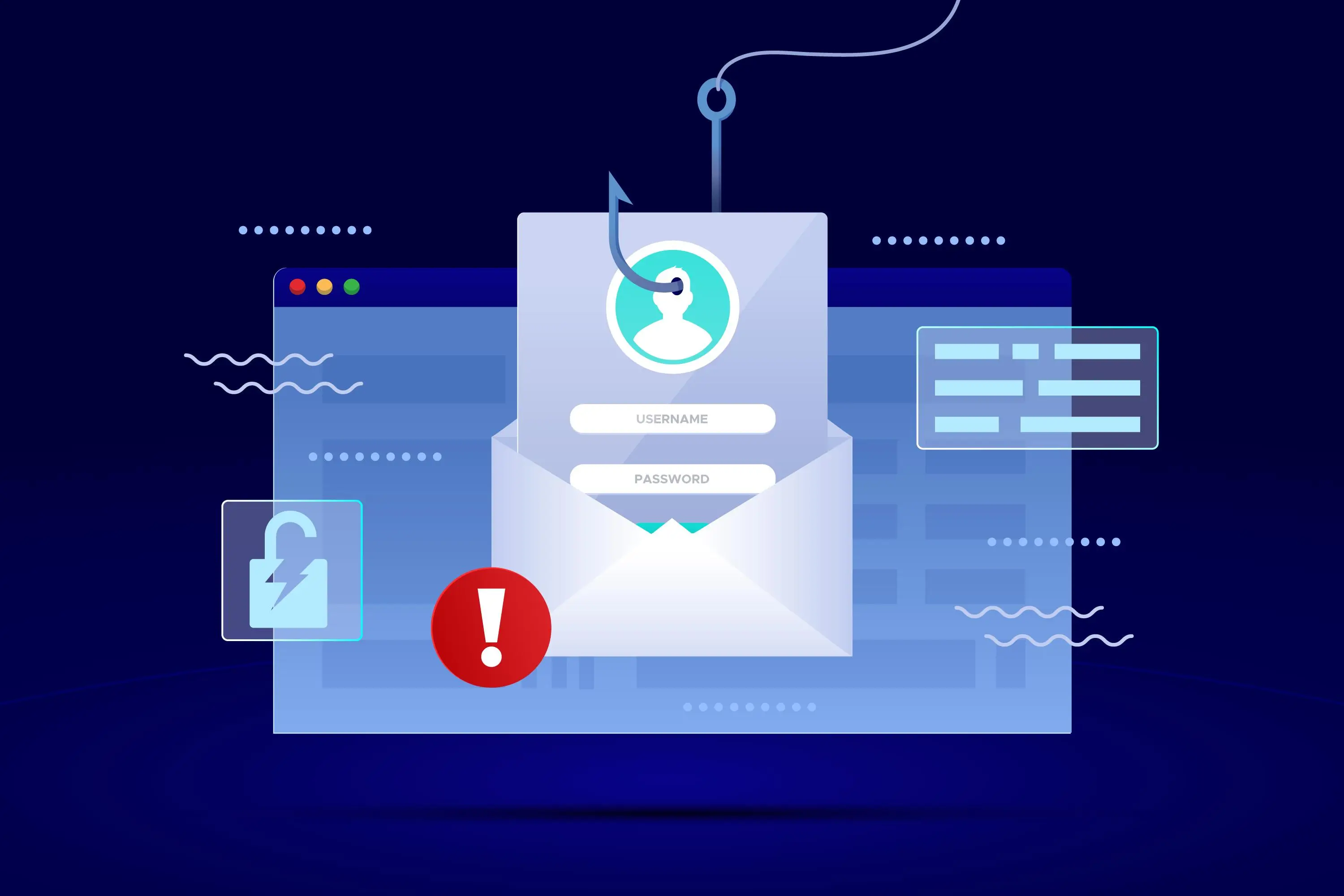Email, despite all the convenience and benefits it brings, has also become one of the main tools in the hands of cybercriminals. Email phishing — is one of the most common forms of online fraud, aimed at stealing users' personal data. In this article, we will take a detailed look at how to recognize phishing messages and protect yourself from fraudulent emails.
What is phishing?
Phishing — is a type of online fraud where attackers attempt to obtain confidential information such as logins, passwords, bank details, and other data through deceit. They often disguise themselves as trustworthy sources to gain the victim's trust.
How do fraudsters work?
Fraudsters send fake emails that may initially seem legitimate, for example, from your bank, postal service, or even employer. These emails contain links or attachments that lead to fake websites, resembling real ones. Once a user enters their data on such a site, it falls into the hands of the attackers.
Signs of a phishing email
- Suspicious sender address: One of the first signs of a phishing message is an unusual sender email address. Even if the display name seems familiar, always check the actual address. For example, instead of support@bank.com, an address like support@bank-security.com might be used.
- Errors in the text: Fraudsters often use automatic translators or write texts in a language foreign to them, leading to grammatical and spelling errors. If an email contains many typos, it should raise suspicion.
- Urgent and alarming messages: Phishing messages often create a sense of urgency or threat to make you act immediately. For example, "Your account will be blocked if you do not update your data within 24 hours."
- Suspicious links and attachments: Never click on links or download attachments from emails unless you are sure of their authenticity. Attackers may use links that visually resemble real URLs but lead to fake sites.
- Request for personal information: Reputable companies never ask for confidential information via email. If you are asked to provide personal data, it is surely a scam.
How to recognize a phishing message
Verifying the sender's authenticity
- Compare the sender's address with one known to you.
- Check the domain name: Often, fraudsters use domains that closely resemble the original ones but with slight differences.
Analyzing the email text
- Look for errors: Grammatical and spelling errors can be a sign of forgery.
- Evaluate the communication style: If the communication style does not match what you are used to from this sender, it should be a red flag.
Careful link inspection
- Hover over links: You should check where a link leads before clicking on it. Look at the browser's status bar to see the full URL address.
- Do not click directly on links: If an email contains a link to a resource, it is better to manually enter the URL in the browser's address bar.
Protection against fraudulent emails
- Use spam filters: Modern email services have built-in spam filters that automatically block suspicious emails. Be sure to enable this feature.
- Install antivirus software: Reliable antivirus with phishing protection can prevent malware installation and protect your data.
- Keep software updated: Regular updates of the operating system and applications close vulnerabilities that attackers can exploit.
- Education and awareness: Conduct training among employees and loved ones on how to recognize phishing and avoid falling for fraudsters' tricks.
- Two-factor authentication: Using two-factor authentication adds an extra layer of security, requiring login confirmation through a second device.
What to do if you have fallen victim to phishing?
If you suspect that you have fallen victim to phishing, immediately take the following actions:
- Change passwords: Immediately change the passwords to all your accounts. Use unique and complex passwords for each account.
- Contact your bank: Notify your bank or credit organization about a possible data breach. They will be able to take measures to protect your funds.
- Scan devices for malware: Run a full system scan using an antivirus program.
- Check accounts and transactions: Carefully monitor your financial activity and report any suspicious operations.
Conclusion
Email phishing — is a serious threat that requires users to be attentive and informed. Recognizing phishing messages and protecting against fraudulent emails should be a priority for every user. Regularly updating your knowledge and using modern security technologies significantly reduces the risk of falling victim to cybercriminals.
